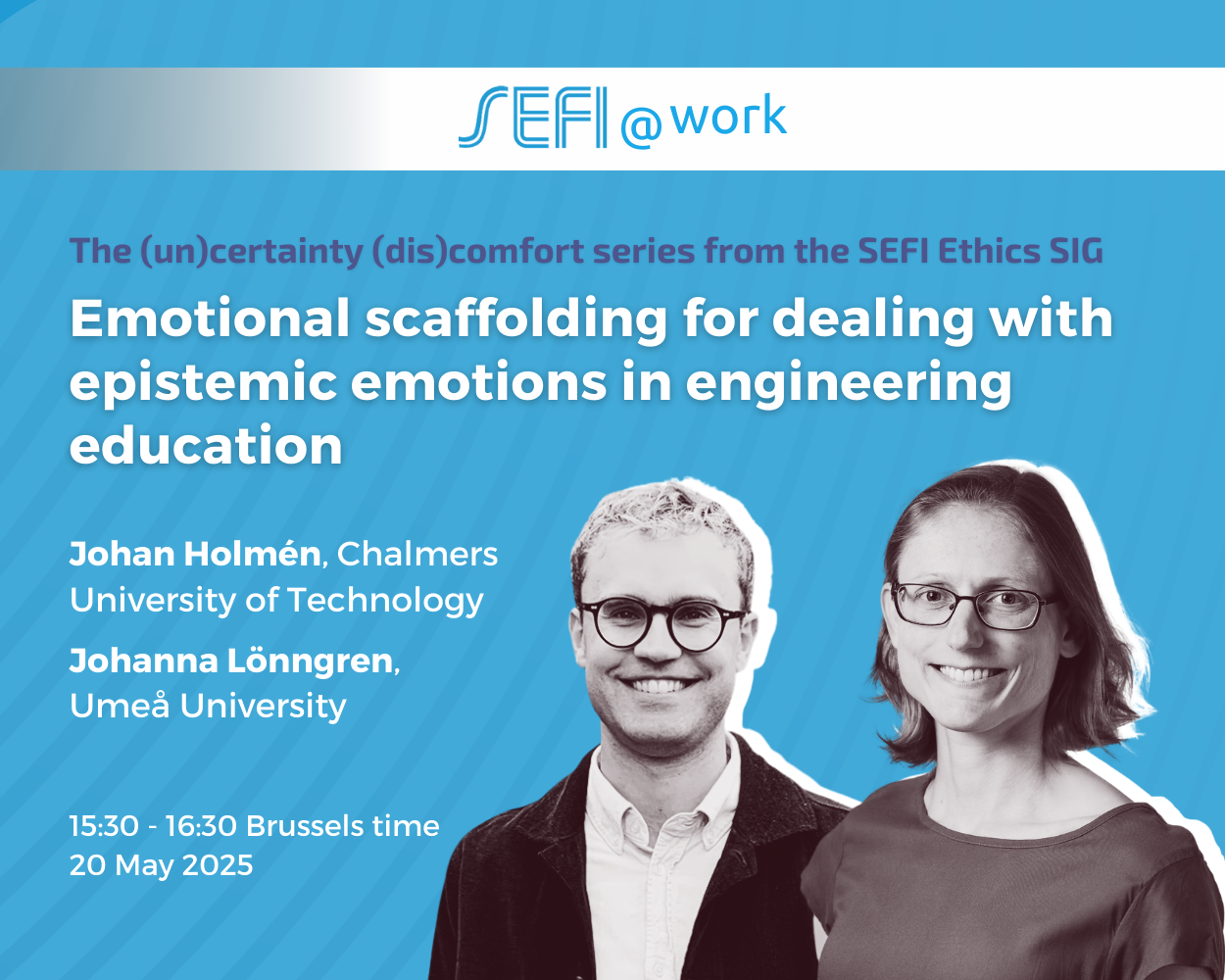UPDATE: We sincerely thank all participants for their interest in the 2025/26 intake. The survey…

Value-sensitive design (VSD) and other methods of design for value are key in engineering and in engineering ethics education (EEE). They are extremely supportive to increase the ethical contribution of engineers in technological developments. Good insights into these methods therefore is of quintessence importance to EEE.
This SEFI ethics newsletter focuses on two dimensions. First, VSD can be introduced in the curriculum to prompt students to apply it. But as a broad and effective practical and analytical tool for value change, it can also be applied to EEE itself. Second, VSD can strongly support participative approaches as a descriptive ethics mapping the values of all involved stakeholders, including the more vulnerable ones. But VSD can also be used as a normative behavioral change ethics method in nudging people to certain values, attitudes and behaviours.
Value Sensitive Design in and for engineering ethics education
In his contribution Responsible Engineering, Design and Innovation, Rafael Calvo opens the newsletter with a plea that engineering curricula should not only look at “performance” and “systemic” challenges, but that “contextual” and “global” aspects should be addressed as well.
Dylan Cawthorne gives a concrete example of how drones and VSD take high flights together in EEE. The process he describes in The beginning of our value sensitive design journey indicates how VSD in EEE starts processes with students, teachers and university partners. But it also shows how including VSD in the teaching changes EEE itself.
This double dynamic also becomes clear in Steven Umbrello and Daisy Yoo’s Envision values, envision value sensitive design, and Elisabeth Nilsson and Anne-Marie Hansen’s contribution An open resource on teaching for values at design and engineering programs. Both contributions provide links to practical materials and illustrate the interaction between VSD “in” and “for” engineering ethics education.
Value Sensitive Design as participation and nudging methodology
But this newsletter goes further. VSD is often presented as a descriptive and neutral method to facilitate participative approaches. Nevertheless, VSD also is an instrument for change for the better. It can support normative behavioral change by nudging people towards certain values, attitudes and behaviours. Of course, how far is it acceptable? Nudging for sustainable behaviour, grabbing cell-phone users’ attention or voting for a president; where is the bright, the grey and the dark zone?
Taylor Stone’s Finding values in the dark is an example. Darkness might, for many people, be linked with uncertainty or danger. Making a plea for darkness is more than “follow what people think”, it is about convincing, it is about making a plea for your own convictions as a (design) engineer.
This requires courage and critical thinking. But also here, as critical thinking needs plurals, privileges, intentions and imperfections, it needs courage for EEE as well, as Katta Spiel explains in Critical Thinking at the Foundation for Engineering Ethics Education. Or, as Jennifer Amos and Gabriel Burke state in their contribution: “Let us not be afraid to ask bold and potentially transformative questions!”
This is the last ethics SEFI Newsletter of this academic year. If you read it before going on holiday, we hope it gives you a pause in your finalising-before-holidays work. If you read it after your holidays, we hope it adds to your re-energised feeling.
All the best,
Gunter Bombaerts and Diana Martin


